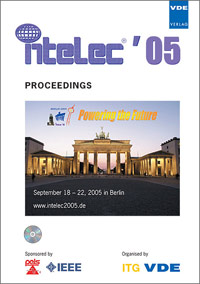Wireless - Next Generation of Monitoring Systems: Issues and Challenges of the Real World
Konferenz: Intelec '05 - Telecommunications Conference - 27th International Telecommunication Energy Conference
18.09.2005 - 22.09.2005 in Berlin, Germany
Tagungsband: Intelec '05 - Telecommunications Conference
Seiten: 6Sprache: EnglischTyp: PDF
Persönliche VDE-Mitglieder erhalten auf diesen Artikel 10% Rabatt
Autoren:
Porebski, Wojciech (Enersafe, Inc. USA)
Tolloczko, Zbigniew (Nova-Info, Poland)
Inhalt:
In spite of a number of new, alternative power supply back up technologies, batteries are here to stay. Continuous monitoring of back up systems on the battery level becomes a vital factor of many mission-critical installations. In this paper, the authors explore the possibilities of implementation of new generation, state of the art battery monitoring systems based on wireless technology. This technology introduces a number of challenges, particularly in noisy UPS and industrial environments. The latest developments, however, indicate that all known issues could be resolved. This paper presents the concept of a monitoring system consisting of 'intelligent' probes measuring various parameters, for both single batteries and the battery system; a local or remote data processing and storage unit (DPS); and, usually, remote management and reporting applications. One of distinguishing features of the proposed system is the absence of wire connections between battery probes and the DPS. This is a major step, so important in the field, towards improving the ease of installation and maintenance of the monitoring system, as well as increasing its overall reliability. While smart probes and a DPS are sufficient for basic monitoring and alarm indications, the real strength of the system is its capability of evaluating the batteries' "health", thus making it possible to replace a battery BEFORE critical failure. Management and monitoring applications, running on a remote computer, collect data from multiple DPS's, store it in a relational database, and give the user the capability of creating both predetermined (canned) and ad-hoc reports. Processed data and reports are available in the multi-user environment. Finally, the paper addresses practical aspects of field installation, set up, maintenance and networking.


